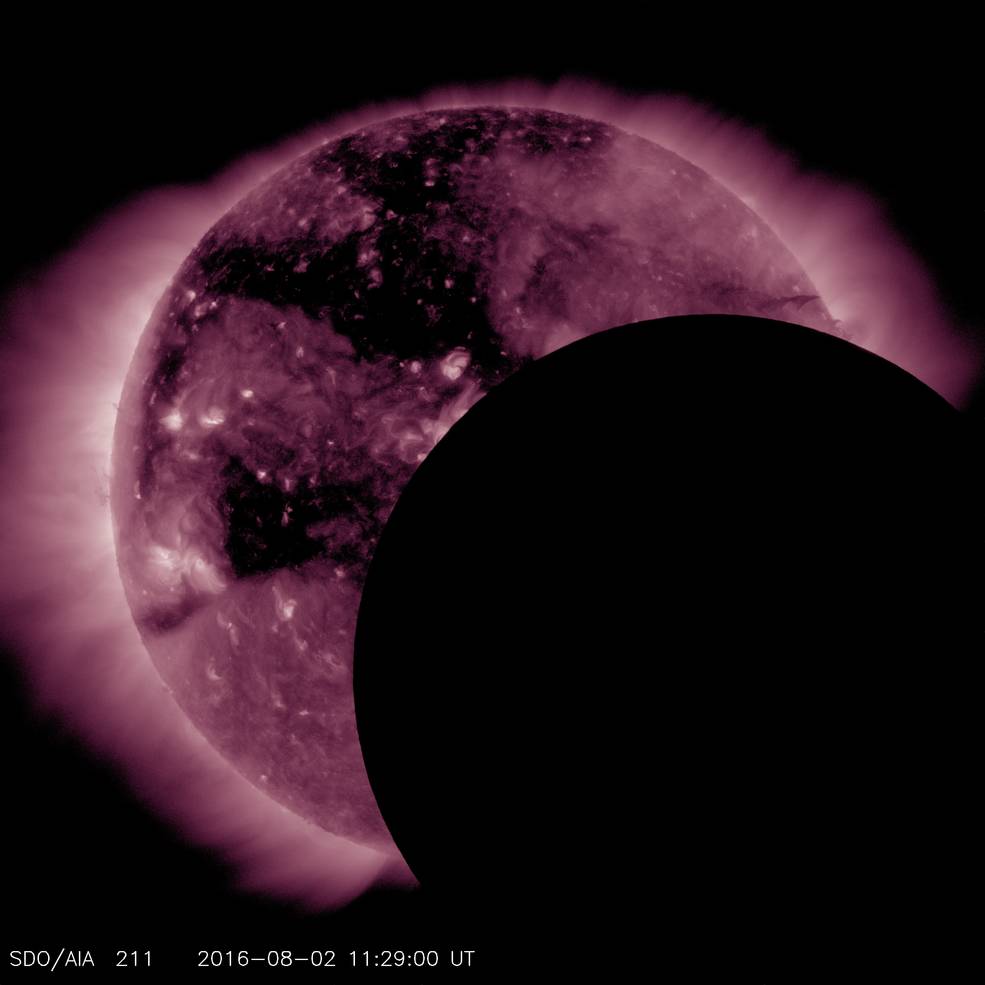
NASA's Solar Dynamics Observatory (SDO) spacecraft experienced a glitch while observing an eclipse Tuesday (Aug. 2) but appears to be on the mend, agency officials said.
SDO watched the moon pass in front of the sun from 7:13 a.m. EDT to 8:08 a.m. EDT (1113 to 1208 GMT) Tuesday morning, capturing some amazing photos in the process.
The orbiting spacecraft didn't go back into "science mode" when the eclipse ended, but the situation does not seem to be dire, mission team members said.
"SDO is currently in inertial mode," NASA officials wrote in an update today (Aug. 3). "The team is receiving data from the spacecraft and is bringing SDO's instruments back online."
The eclipse that SDO observed Tuesday was visible only from the spacecraft's perspective in Earth orbit. The next solar eclipse humanity can observe will occur on Sept. 1, when an annular or "ring of fire" eclipse will be visible to skywatchers across much of Africa.
The $800 million SDO mission launched in February 2010. The probe's spectacular, high-definition images are helping researchers better understand the sun's magnetic field and what drives the variation in solar activity, mission team members have said.
Follow Mike Wall on Twitter @michaeldwall and Google+. Follow us @Spacedotcom, Facebook or Google+. Originally published on Space.com.
Breaking space news, the latest updates on rocket launches, skywatching events and more!

Michael Wall is a Senior Space Writer with Space.com and joined the team in 2010. He primarily covers exoplanets, spaceflight and military space, but has been known to dabble in the space art beat. His book about the search for alien life, "Out There," was published on Nov. 13, 2018. Before becoming a science writer, Michael worked as a herpetologist and wildlife biologist. He has a Ph.D. in evolutionary biology from the University of Sydney, Australia, a bachelor's degree from the University of Arizona, and a graduate certificate in science writing from the University of California, Santa Cruz. To find out what his latest project is, you can follow Michael on Twitter.
